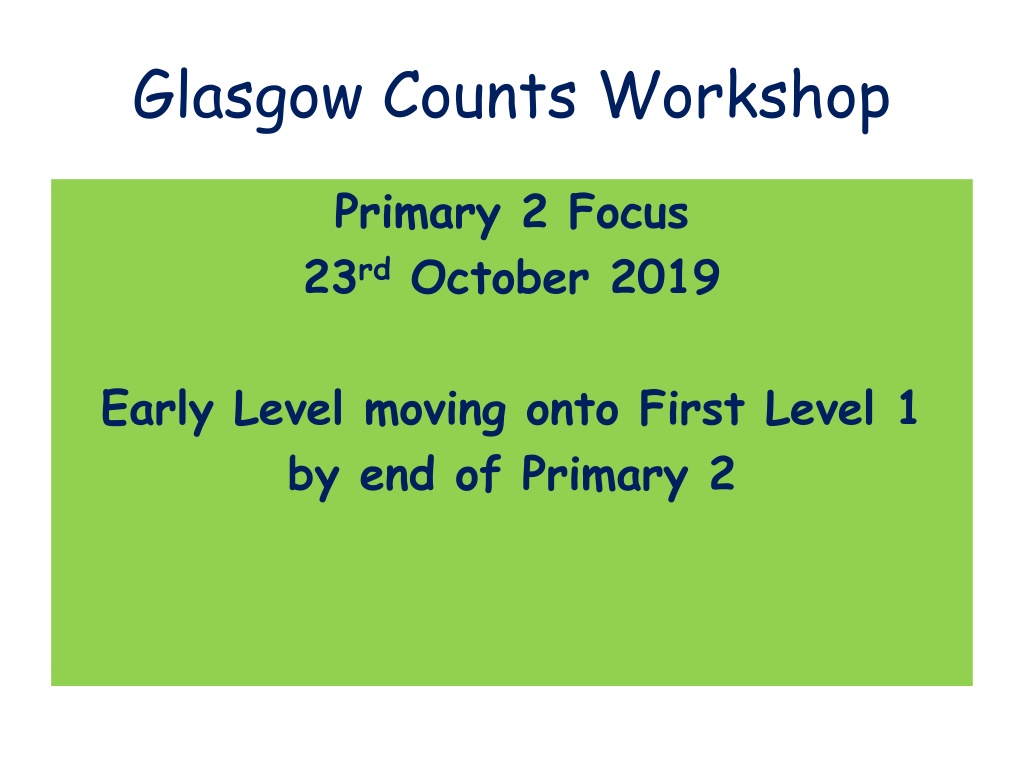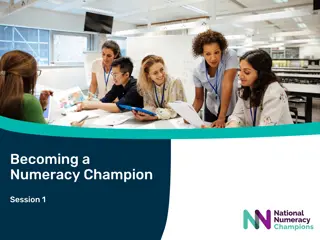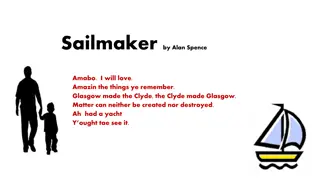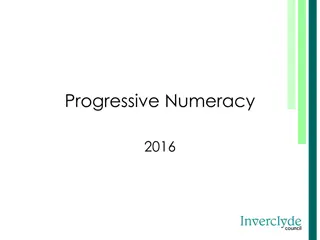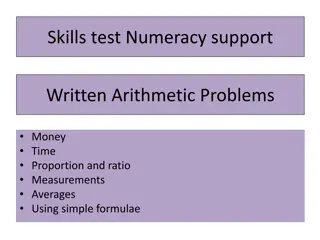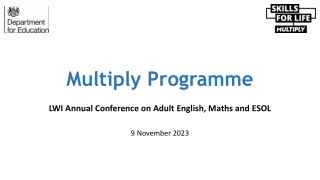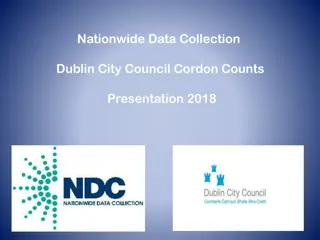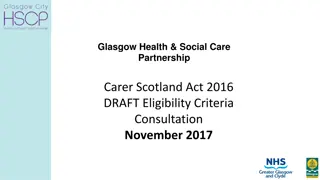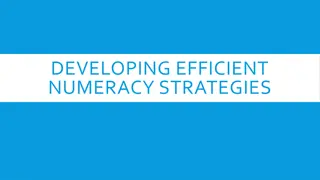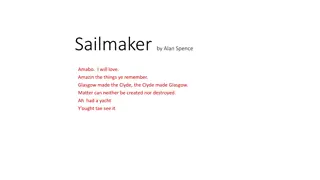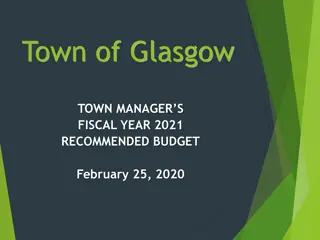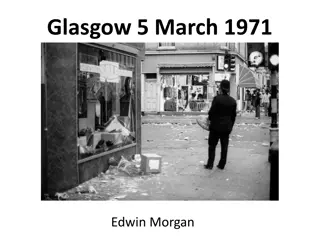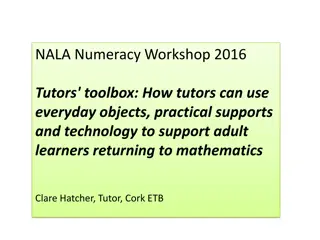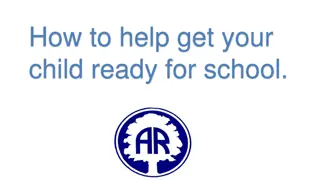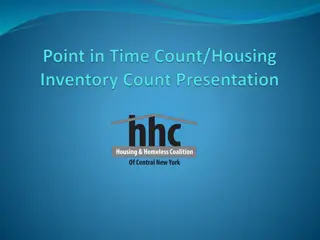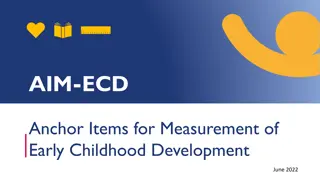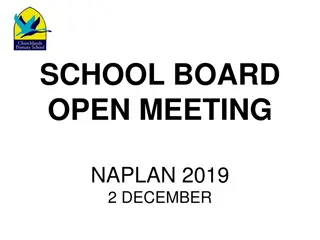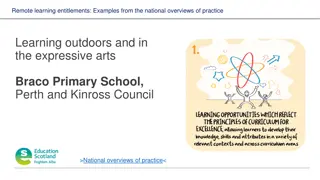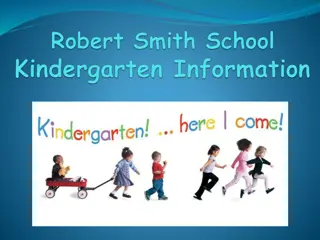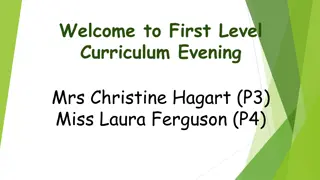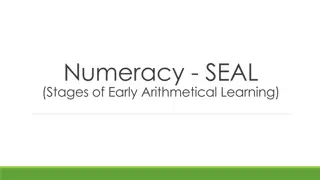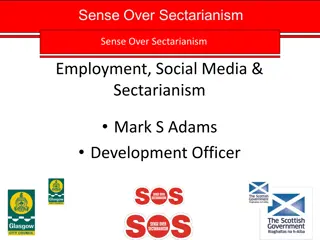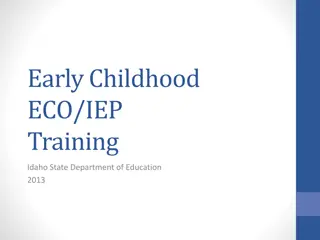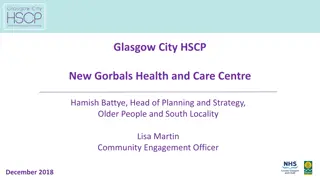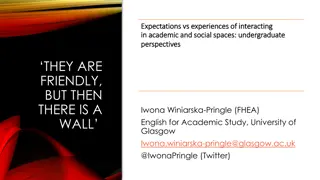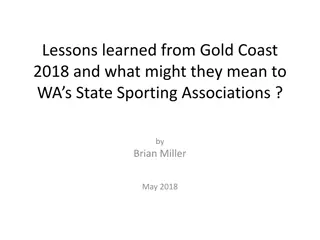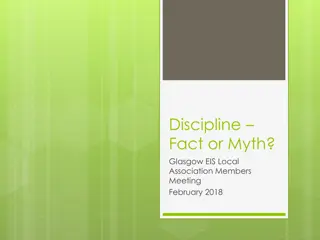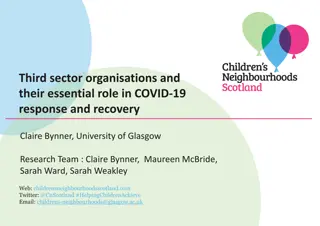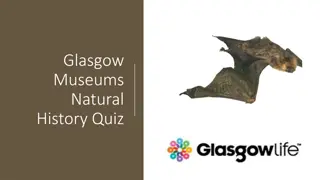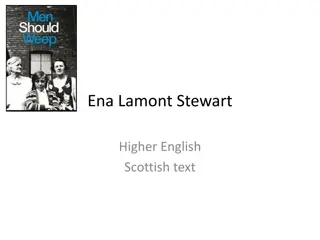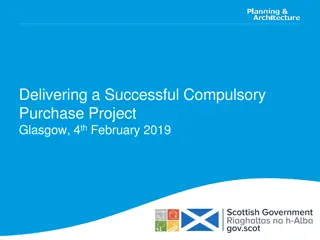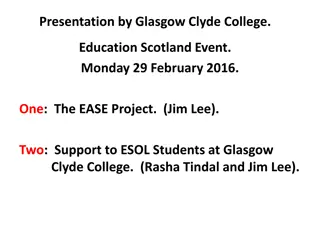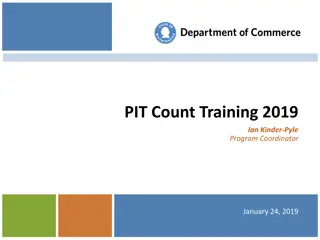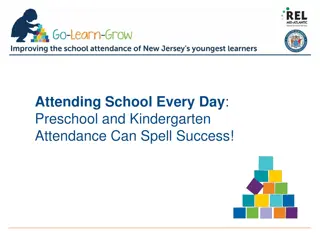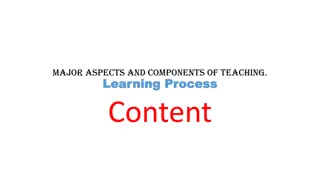Glasgow Counts Workshop: Early Numeracy Strategies and Resources
Explore strategies and resources for early numeracy development at the Glasgow Counts Workshop. Learn about skip counting, numeral recognition, and place value understanding. Dive into interactive activities to support your child's mathematical learning journey.
Uploaded on Oct 06, 2024 | 0 Views
Download Presentation

Please find below an Image/Link to download the presentation.
The content on the website is provided AS IS for your information and personal use only. It may not be sold, licensed, or shared on other websites without obtaining consent from the author. Download presentation by click this link. If you encounter any issues during the download, it is possible that the publisher has removed the file from their server.
E N D
Presentation Transcript
Glasgow Counts Workshop Primary 2 Focus 23rdOctober 2019 Early Level moving onto First Level 1 by end of Primary 2
Aims for todays workshop Understand some of the strategies and resources your child will be using in class. See example questions to ask your child to support understanding of number. Work with your child to solve problems using Glasgow Counts concrete resources.
Counting P2 Skip Counting is an important part of early numeracy. Skip counting used in telling the time, dealing with money. Counting forwards and backwards in 1s, 2s, 5s 10s form the basis of solving problems in addition, subtraction. P3 Pupils should be beginning to start counting from a number that is not a multiple. Example if you can count in 10s (10,20,30) can you count in 10s starting at 12? (12,22,32). A hundred square is helpful here to notice number patterns! Pupils should have regular opportunities for skip counting can you count in 2s starting from 15?
Hundred Square Splat Ask your child to count in multiples using the hundred square splat game. Visual patterns make it easier for children to make sense of skip counting! Sometimes, children can remember a counting pattern eg. 2,4,6,8. Using a visual support helps to make sense of that pattern
Numerals P2 Being able to recite numerals is not an indication of number sense being developed; simply a list with no understanding. Pupils must recognise and identify numerals 0-9 at the start and be able to match the correct number name. Pupils then develop the understanding of the amount each number represents. The following concrete resources help develop number sense.
Numerals P3 Pupils should have an understanding of place value to recognise and understand numbers. Children should begin to see how numbers are made up. Arrow cards and place value counters are useful tools to promote place value understanding. For this particular picture, the number being represented is 5 hundreds 4 tens and 3 units so 543.
Numerals Numicon is also a very helpful resource which allows children to see a visual picture of a number. Questions to ask your child What do you notice about number 32 and number 33? They both have 3 tens .
Place Value P2 Questions for your child: What is the value of the digit 2 in these numbers? 32, 27, 92 Explain how you know. What is the same and what is different in these two numbers 16 and 61? Barriers to Learning: Children write 13 as 30, muddling the teen and ty numbers. Use the units digit before the tens digit. Teens numbers can confuse as child hears the units digit first- lead to reversing numbers- concrete materials allow child to visualise the number increasing number sense. Lack of understanding that the position of a digit gives its value. Language of numbers can cause confusion e.g. the word eleven does not make it clear that it is actually ten and one.
Questions to ask your child about numbers P3 Can you show/write me a 3 digit number with 6 units? Yousaf writes three hundred and six as 3006 . Do you agree with Yousaf? Why/Why not? Is 24 odd or even? Prove it. Asking children to show their thinking, prove their working and justify their answers allows for a deeper understanding of number and can also point out common misconceptions (like Yousaf s 3006) which them allow teachers and parents to correct the child.
Resources to support understanding of number and place value
Helpful Websites www.kangaroomaths.com www.ncetm.org.uk https://mathsframe.co.uk/en/resources /category/10/ordering-comparing-and- reading https://nrich.maths.org/6343
Groups Group 1 Group 3 Muhammad Abdullah Subhan Imran Ajwa Ahmad Innaayah Iqbal Arham Ahmed Zayn Irfan Armaan Ahmed M. Talha Javed Amer Al Ghazawi Inayah Kamran Group 2 Group 4 Abdulahadi Al Zoubi Zainab Ahmed Alizah Ali Deen Malik Rida Ali Shahmir Malik Lulu Gadder Abdullah Qureshi Aleena Ihsan Ismaeel Sahail
Groups (continued) Group 5 Group 7 Rayvaan Sangray Eshaal Khan Jibraeel Shehbaz Waris Ali Naqvi Ranvir Singh Alina Nisar Issa Tayyub Mano Saeed Aarv Battu Rayyan Sarwar Group 6 Musa Yasin Alvina Yasser Amna Zahra Fatima Adeel Aila Afzal Maleeha Amir Muhammed Hasnain
